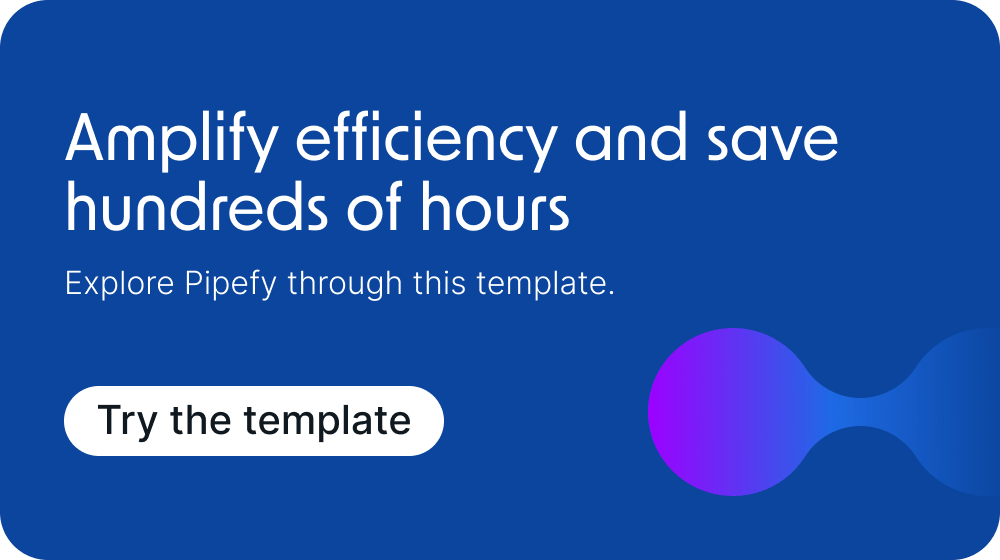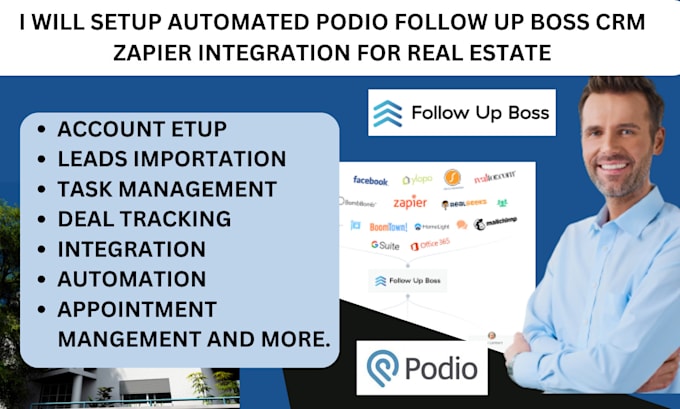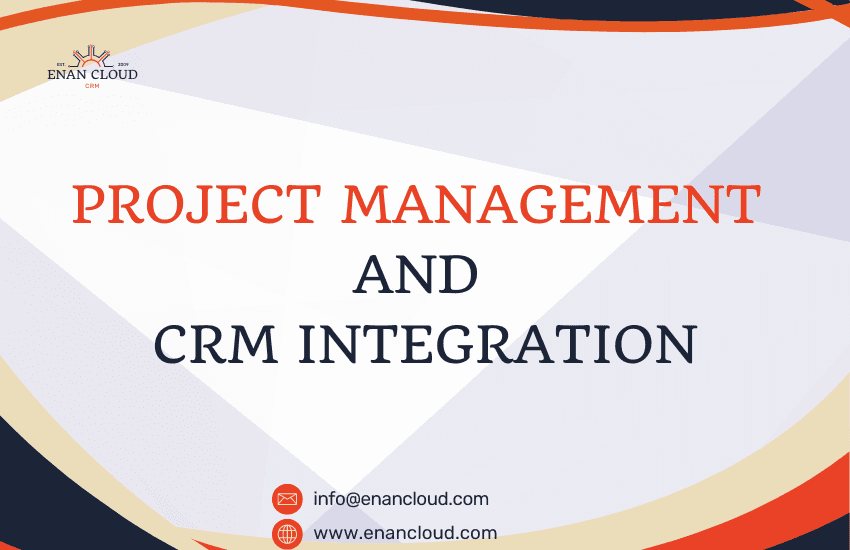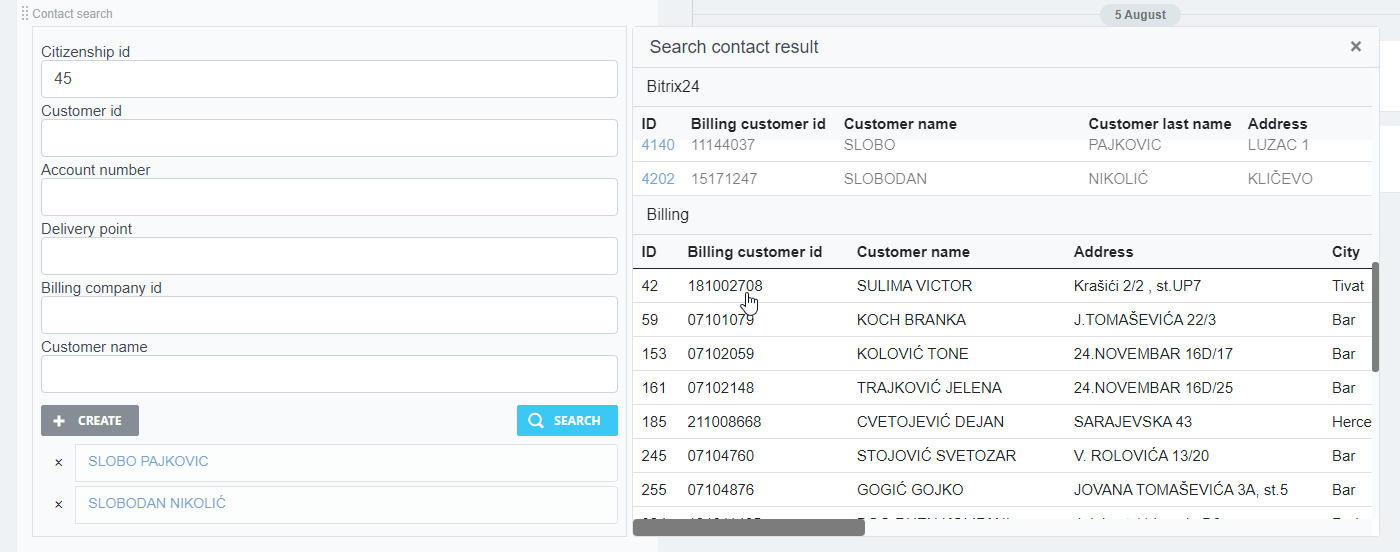
The Power of Two: Why CRM Integration with Pipefy Matters
In today’s fast-paced business environment, efficiency and streamlined workflows are no longer luxuries – they’re absolute necessities. Companies are constantly seeking ways to optimize their operations, reduce manual tasks, and enhance overall productivity. This is where the magic of integrating a Customer Relationship Management (CRM) system with a workflow automation platform like Pipefy truly shines. But what exactly is the fuss about? Why is this integration so powerful, and how can it revolutionize your business processes?
Think of your CRM as the central nervous system of your customer interactions. It’s where you store vital information about your leads, customers, and sales activities. Pipefy, on the other hand, is the master conductor of your workflows. It’s a flexible and intuitive platform that allows you to design, automate, and track any process you can imagine, from onboarding new clients to managing marketing campaigns.
When you bring these two powerhouses together, you create a symphony of efficiency. Information flows seamlessly between your CRM and Pipefy, eliminating data silos, reducing errors, and saving your team valuable time. Imagine a world where a new lead captured in your CRM automatically triggers a specific workflow in Pipefy, initiating a series of actions like sending automated emails, assigning tasks to team members, and updating the lead’s status. This is the reality that CRM integration with Pipefy unlocks.
Understanding the Dynamics: CRM and Pipefy – A Closer Look
Before diving into the specifics of integration, let’s take a closer look at each platform and how they operate. This understanding will be crucial in appreciating the benefits and planning a successful integration strategy.
Customer Relationship Management (CRM) Systems
A CRM system is designed to manage all aspects of your customer relationships. It’s the central hub for:
- Contact Management: Storing and organizing contact information, including names, email addresses, phone numbers, and social media profiles.
- Lead Management: Tracking leads through the sales pipeline, from initial contact to conversion.
- Sales Automation: Automating repetitive sales tasks, such as sending follow-up emails, scheduling appointments, and generating reports.
- Marketing Automation: Managing marketing campaigns, segmenting your audience, and tracking campaign performance.
- Customer Service: Providing excellent customer support through ticketing systems, knowledge bases, and live chat.
- Reporting and Analytics: Generating reports and analyzing data to gain insights into your sales, marketing, and customer service performance.
Popular CRM platforms include Salesforce, HubSpot, Zoho CRM, and Pipedrive, among many others. The choice of CRM often depends on the size and specific needs of your business.
Pipefy: The Workflow Automation Maestro
Pipefy is a workflow automation platform that allows you to design, automate, and track any process. It’s built on the concept of “pipes,” which represent individual workflows. Each pipe consists of a series of cards that move through different phases, representing the steps in your process. Pipefy empowers you to:
- Design Custom Workflows: Create workflows for any process, from onboarding to invoice processing, tailored to your specific needs.
- Automate Repetitive Tasks: Automate tasks such as sending emails, assigning tasks, updating statuses, and moving cards between phases.
- Collaborate Effectively: Facilitate collaboration among team members by assigning tasks, setting deadlines, and providing clear visibility into each step of the process.
- Track Performance: Monitor key metrics and track the progress of your workflows using built-in analytics and reporting tools.
- Integrate with Other Tools: Connect Pipefy with other popular platforms, including CRM systems, email marketing tools, and project management software.
Pipefy’s user-friendly interface and flexibility make it an ideal choice for businesses of all sizes looking to streamline their operations and improve efficiency.
The Benefits of Integration: Unlocking Unprecedented Efficiency
The integration of CRM and Pipefy offers a multitude of benefits that can significantly impact your business’s bottom line. Let’s explore some of the most significant advantages:
Enhanced Data Accuracy and Consistency
One of the biggest challenges for businesses is maintaining accurate and consistent data across different systems. When data is manually entered or updated in multiple places, errors are inevitable. CRM integration with Pipefy solves this problem by:
- Eliminating Manual Data Entry: Automating the transfer of data between your CRM and Pipefy, reducing the need for manual data entry and minimizing the risk of human error.
- Ensuring Data Synchronization: Keeping data synchronized across both platforms, so you always have the most up-to-date information at your fingertips.
- Improving Data Quality: Reducing the likelihood of inconsistencies and errors, leading to higher-quality data that can be used for more accurate reporting and analysis.
Increased Efficiency and Productivity
By automating tasks and streamlining workflows, CRM integration with Pipefy can dramatically boost your team’s efficiency and productivity. Here’s how:
- Automated Task Assignment: Automatically assigning tasks to team members based on specific triggers or events in your CRM, such as a new lead being created or a deal being closed.
- Automated Notifications and Reminders: Sending automated notifications and reminders to team members to ensure they stay on track and meet deadlines.
- Reduced Manual Work: Automating repetitive tasks, such as sending emails, updating statuses, and moving cards between phases, freeing up your team to focus on more strategic initiatives.
- Faster Processing Times: Streamlining workflows and reducing bottlenecks, leading to faster processing times and quicker turnaround times.
Improved Customer Experience
A well-integrated CRM and Pipefy system can also significantly improve your customer experience. By providing your team with a complete view of the customer journey, you can:
- Personalize Interactions: Tailoring your interactions with customers based on their individual needs and preferences.
- Provide Faster Response Times: Responding to customer inquiries and requests more quickly and efficiently.
- Improve Communication: Keeping customers informed about the status of their requests and providing timely updates.
- Increase Customer Satisfaction: Delivering a better customer experience, leading to increased customer satisfaction and loyalty.
Better Collaboration and Communication
CRM integration with Pipefy can also foster better collaboration and communication within your team. Here’s how:
- Centralized Information: Providing a centralized repository for all customer-related information, making it easier for team members to access the information they need.
- Improved Visibility: Giving team members clear visibility into the status of each customer interaction and the progress of each workflow.
- Enhanced Communication: Facilitating communication between team members through automated notifications, task assignments, and collaborative features.
- Reduced Email Overload: Minimizing the need for lengthy email chains by providing a more structured and efficient way to communicate and collaborate.
Data-Driven Decision Making
With seamless integration, you gain access to more comprehensive and accurate data, empowering you to make better decisions. This includes:
- Improved Reporting: Generating more accurate and insightful reports on your sales, marketing, and customer service performance.
- Data-Driven Insights: Analyzing data to identify trends, patterns, and opportunities for improvement.
- Better Forecasting: Improving your ability to forecast sales and revenue based on historical data and current trends.
- Optimized Processes: Using data to identify areas where your workflows can be optimized to improve efficiency and productivity.
Step-by-Step: Integrating Your CRM with Pipefy
Integrating your CRM with Pipefy might seem daunting, but with the right approach, it can be a straightforward process. Here’s a step-by-step guide to help you get started:
1. Planning and Preparation
Before you begin, it’s essential to plan your integration strategy carefully. This includes:
- Define Your Goals: Clearly define your objectives for the integration. What do you want to achieve? What problems are you trying to solve?
- Identify Key Processes: Identify the specific workflows and processes that you want to integrate.
- Map Data Fields: Determine which data fields you want to synchronize between your CRM and Pipefy.
- Choose an Integration Method: Decide how you want to integrate your CRM with Pipefy. You can choose from several options, including native integrations, third-party integration platforms, and custom integrations using APIs.
2. Selecting an Integration Method
The method you choose will depend on your CRM, your technical expertise, and your specific needs. Here are the main options:
- Native Integrations: Some CRM platforms and Pipefy offer native integrations, which are pre-built connections that require minimal setup. Check if your CRM and Pipefy have a native integration available.
- Third-Party Integration Platforms: Platforms like Zapier, Integromat (now Make), and Tray.io allow you to connect various applications without requiring coding. These platforms provide a user-friendly interface for creating automated workflows.
- API Integration: If you need more control and customization, you can use the APIs of your CRM and Pipefy to build a custom integration. This requires technical expertise and coding skills.
3. Setting Up the Integration
Once you’ve chosen your method, it’s time to set up the integration. The specific steps will vary depending on the method you choose, but generally involve:
- Connecting Your Accounts: Connecting your CRM and Pipefy accounts to the integration platform.
- Mapping Data Fields: Mapping the data fields between your CRM and Pipefy, ensuring that data is transferred correctly.
- Creating Workflows: Creating automated workflows that trigger actions in Pipefy based on events in your CRM, or vice versa.
- Testing and Refining: Testing your integration thoroughly to ensure it’s working as expected. Make any necessary adjustments and refine your workflows based on your testing results.
4. Testing and Monitoring
After setting up the integration, it’s crucial to test it thoroughly to ensure it works correctly. This includes:
- Testing Different Scenarios: Testing various scenarios to ensure that data is transferred accurately and that workflows are triggered correctly.
- Monitoring Data Flow: Monitoring the data flow between your CRM and Pipefy to identify any errors or inconsistencies.
- Making Adjustments: Making adjustments to your integration as needed to optimize performance and address any issues that arise.
5. Ongoing Maintenance and Optimization
Integration is not a one-time setup; ongoing maintenance and optimization are essential for ensuring its continued effectiveness. This includes:
- Regular Monitoring: Continuously monitoring your integration to ensure it’s functioning correctly.
- Updating Workflows: Regularly updating your workflows to reflect changes in your business processes.
- Staying Updated: Keeping your CRM, Pipefy, and any integration platforms up-to-date with the latest versions and features.
Real-World Applications: Putting Integration into Action
The possibilities of CRM integration with Pipefy are vast. Here are a few real-world examples to illustrate how this powerful combination can be used to transform business processes:
1. Lead Qualification and Nurturing
Imagine a new lead is captured through a form on your website. With CRM integration with Pipefy, this can trigger a series of automated actions:
- Lead Creation in CRM: The lead is automatically created in your CRM, with all relevant information captured from the form.
- Workflow Initiation in Pipefy: A workflow is initiated in Pipefy to qualify the lead.
- Automated Email Sequence: The lead receives an automated email sequence designed to nurture them and provide valuable information.
- Task Assignment: A task is assigned to a sales representative to follow up with the lead.
- Lead Scoring and Qualification: The sales representative updates the lead’s status in the CRM based on their interaction, triggering actions in Pipefy such as moving the lead to the next stage of the workflow.
2. Sales Process Automation
From opportunity creation to deal closure, CRM integration with Pipefy can streamline the entire sales process:
- Opportunity Creation: When a qualified lead becomes an opportunity in your CRM, a corresponding card is created in Pipefy to manage the sales process.
- Task Automation: Automated tasks are assigned to sales representatives at each stage of the sales process, such as sending proposals, scheduling demos, and following up with prospects.
- Document Management: Documents, such as proposals and contracts, are automatically generated and stored in a centralized location.
- Deal Tracking: The progress of each deal is tracked in real-time, providing visibility into the sales pipeline.
- Deal Closure and Handover: Upon deal closure, the integration can trigger a handover process in Pipefy, initiating onboarding or other post-sales activities.
3. Customer Onboarding
Seamless customer onboarding is crucial for customer satisfaction and retention. Integration can automate this process:
- New Customer Trigger: When a new customer is created in your CRM, a Pipefy workflow is triggered to initiate the onboarding process.
- Welcome Emails and Introductions: Automated welcome emails are sent to the new customer, introducing them to your services and providing helpful resources.
- Task Assignment: Tasks are assigned to your customer success team to guide the customer through the onboarding process.
- Progress Tracking: The progress of the onboarding process is tracked in Pipefy, ensuring that all steps are completed efficiently.
- Feedback Collection: Surveys and feedback forms are sent to the customer to gather feedback and identify areas for improvement.
4. Customer Support and Ticketing
CRM integration with Pipefy can significantly improve your customer support processes:
- Ticket Creation: When a customer submits a support request, a ticket is automatically created in your CRM and a corresponding card is created in Pipefy.
- Ticket Routing: Tickets are automatically routed to the appropriate support team members based on the nature of the request.
- Automated Responses: Automated responses are sent to the customer acknowledging their request and providing an estimated resolution time.
- Task Assignment: Tasks are assigned to support team members to resolve the ticket.
- Resolution Tracking: The progress of each ticket is tracked in real-time, ensuring that all tickets are resolved efficiently.
5. Marketing Campaign Management
CRM integration with Pipefy can streamline your marketing campaigns:
- Campaign Trigger: When a new marketing campaign is launched in your CRM, a Pipefy workflow is triggered to manage the campaign’s activities.
- Task Assignment: Tasks are assigned to marketing team members to execute the campaign, such as creating email templates, scheduling social media posts, and creating landing pages.
- Lead Segmentation: Leads are segmented based on their behavior and interactions, allowing you to target specific groups with personalized messaging.
- Performance Tracking: The performance of each campaign is tracked in real-time, providing insights into what’s working and what’s not.
- Reporting and Analysis: Reports are generated to analyze campaign performance and identify areas for improvement.
Choosing the Right Integration Strategy: Key Considerations
Selecting the right integration strategy is vital for a successful implementation. Consider these factors:
Your CRM and Pipefy Capabilities
Evaluate the features and capabilities of your CRM and Pipefy platforms. Do they offer native integrations? Do they have APIs that can be used for custom integration? Understanding the capabilities of each platform is crucial for choosing the right approach.
Your Technical Expertise
Consider your team’s technical expertise. If you don’t have in-house developers, you may want to opt for a third-party integration platform or a pre-built integration.
Your Budget
The cost of integration can vary significantly depending on the chosen method. Native integrations are often the most affordable, while custom integrations can be the most expensive.
Your Business Needs
Consider your specific business needs and the processes you want to automate. Choose an integration strategy that aligns with your goals and provides the functionality you need.
Scalability and Flexibility
Choose an integration strategy that is scalable and flexible enough to accommodate your future growth and changing business needs.
Overcoming Challenges: Common Pitfalls and Solutions
While CRM integration with Pipefy offers numerous benefits, there are also potential challenges. Being aware of these and having solutions in place can ensure a smoother implementation:
Data Mapping Complexities
Challenge: Mapping data fields between your CRM and Pipefy can be complex, especially when dealing with custom fields or different data formats.
Solution: Carefully plan your data mapping strategy, ensuring that all relevant data fields are mapped correctly. Test your integration thoroughly to identify and resolve any data mapping errors.
Integration Platform Limitations
Challenge: Third-party integration platforms may have limitations in terms of the features they support or the number of integrations they can handle.
Solution: Choose an integration platform that meets your specific needs and offers the features you require. Consider upgrading to a higher-tier plan if necessary.
Lack of Expertise
Challenge: Lack of technical expertise can make it difficult to set up and maintain a custom integration.
Solution: Consider hiring a consultant or using a third-party integration platform if you lack in-house technical expertise.
Data Security Concerns
Challenge: Data security is a major concern when integrating different platforms. You must ensure that your data is protected and that your integration complies with all relevant security regulations.
Solution: Choose an integration method that offers robust security features. Implement appropriate security measures to protect your data, such as encryption and access controls.
Change Management
Challenge: Implementing a new integration can require significant changes to your team’s workflows and processes. Without proper change management, your team may resist the new system.
Solution: Communicate the benefits of the integration to your team and provide adequate training. Involve your team in the integration process to ensure that they understand how it works and how it will benefit them. Provide ongoing support and address any concerns that may arise.
The Future of CRM and Pipefy: Trends and Innovations
The integration of CRM and Pipefy is constantly evolving. Here are some trends and innovations to watch out for:
AI-Powered Automation
Artificial intelligence (AI) is playing an increasingly important role in automating business processes. AI-powered integrations can automate more complex tasks, such as lead scoring, deal prediction, and customer service interactions.
No-Code/Low-Code Integration Platforms
No-code/low-code integration platforms are making it easier for businesses to integrate their systems without requiring coding skills. These platforms offer user-friendly interfaces and pre-built connectors to connect various applications.
Hyper-Personalization
Businesses are increasingly focused on providing personalized customer experiences. CRM integration with Pipefy can enable hyper-personalization by providing a complete view of the customer journey and allowing you to tailor your interactions based on their individual needs and preferences.
Increased Focus on Data Analytics
Data analytics is playing an increasingly important role in business decision-making. CRM integration with Pipefy can provide a wealth of data that can be used to generate insights into your sales, marketing, and customer service performance.
Integration with Emerging Technologies
As new technologies emerge, such as blockchain and the Internet of Things (IoT), CRM integration with Pipefy will continue to evolve to integrate these new technologies. This will enable businesses to automate even more complex processes and gain a deeper understanding of their customers.
Conclusion: Harmonizing Your Business with CRM and Pipefy Integration
CRM integration with Pipefy is a powerful way to streamline your business processes, improve efficiency, and enhance the customer experience. By carefully planning your integration strategy, choosing the right method, and addressing potential challenges, you can unlock the full potential of these two powerful platforms. The benefits of this integration are undeniable, leading to enhanced data accuracy, increased efficiency, improved customer experiences, better collaboration, and data-driven decision-making. As businesses continue to seek ways to optimize their operations and stay ahead of the competition, CRM integration with Pipefy will become increasingly essential. Embrace the power of seamless integration, and watch your business thrive.
By connecting your CRM and Pipefy, you’re not just linking two software programs; you’re creating a dynamic ecosystem where information flows freely, tasks are automated, and your team can focus on what matters most: building strong customer relationships and driving business growth. It’s time to orchestrate a symphony of efficiency and unlock the true potential of your business processes.


